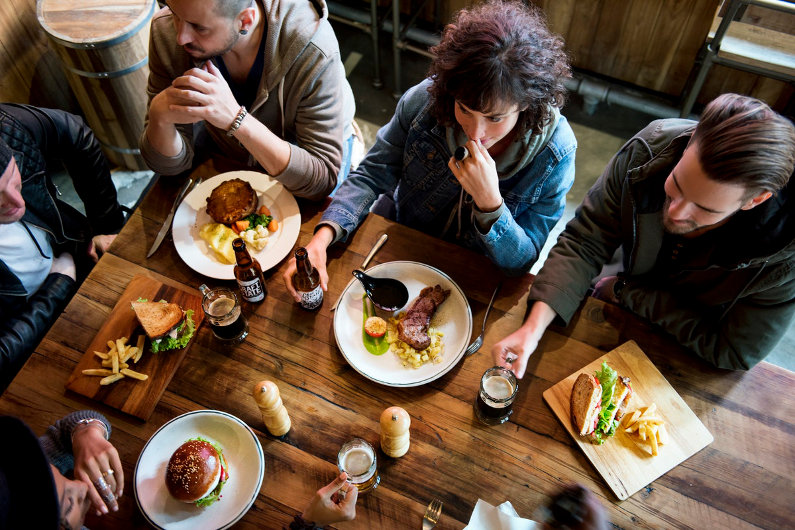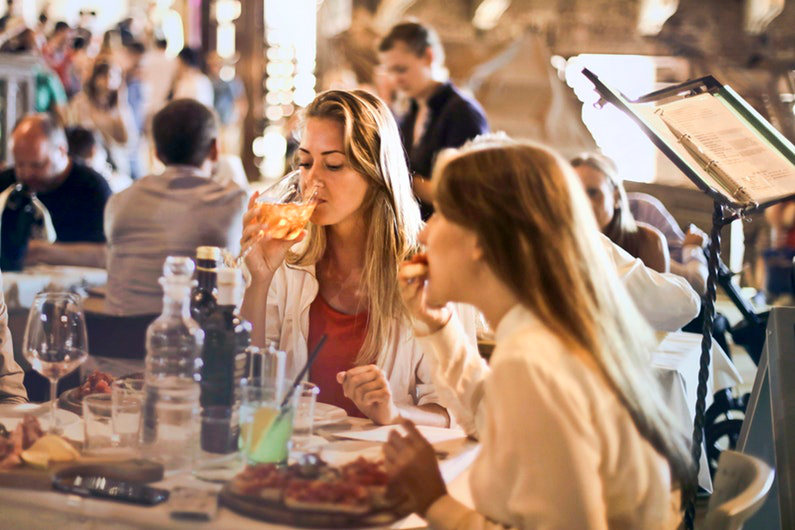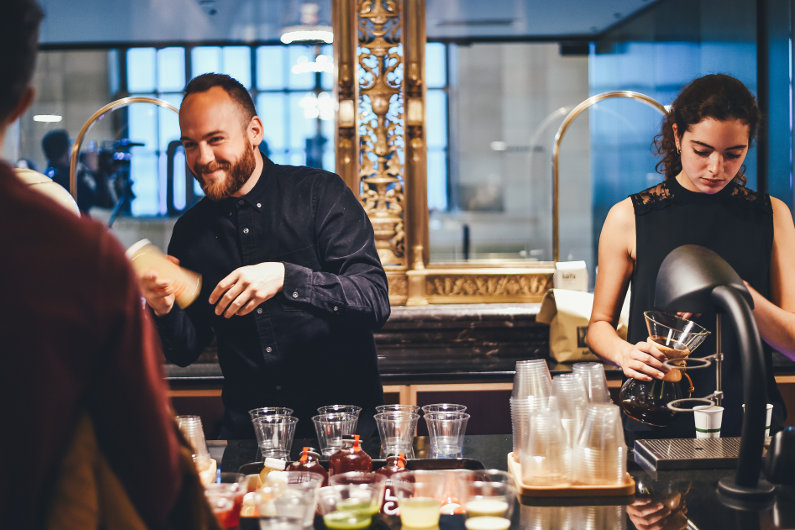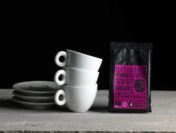It’s been a difficult time for the ‘going out’ industry of late. The fact is, many people are choosing to stay in these days, whether it’s for family or financial reasons, or simply because we are more time-starved than ever before. It’s a problem that has impacted pubs in particular, with 12,450 pubs closing in the UK between the year 2000 and 2017.
One of the main reasons cited is cheap supermarket booze. With drink and food available cheaper in the shops to take home, having friends around seems like the easier and cheaper option. So how can food and drink businesses adapt to this? Frappino machine retailer, Snowshock, investigates.

Financial options
We all like to save our pennies. So, it’s a difficult pitch for bars and restaurants really — travel somewhere else, pay for a meal you could cook at home for less, then travel home. Pros? You get your food cooked for you, you don’t have to do the washing up, and it’s cooked by a professional.
The down sides? You have to pay for travel, be it in fuel or taxi fare. You have to pay more for the food than buying the ingredients yourself. You can’t always tell what’s in the food, and for now at least, you can’t really tell how healthy the meal is. In a world that is becoming more conscious of health and wellbeing, that last point can be a real put-off for eating out.
Restaurants do have the added benefit of the lure of professionally-cooked food. For bars and pubs, the game is even harder; there aren’t many brands of drink on offer at a pub or bar that you can’t buy more of, cheaper, at a supermarket. Then, you can have them at home, with your friends, away from other people, doing your own thing. Why sit in a pub trying to chat with your friends over the sound of a band you don’t particularly like when you can sit at home, chat to your friends with the same drinks, more money in your pocket, and Spotify on with band you do like?
But that’s the issue. People have so much technology at their disposal now that pubs and bars can seem a little dated. Without change and renovation, pubs in particular have felt the sharp sting of decline.
Experience
The problem has been faced by another sector, so let’s look there for comparison. For many years, outlets were mourning the decline of the cinema industry — between piracy and prices, cinema attendance had fallen considerably from its post-war heydays. But despite this, and even with the advent of legitimate streaming services from the comfort of our own homes, the cinema industry has experienced a resurgence of attendance, hitting 177 million UK admissions in 2018, the highest it’s been since 1971.
Where did this success come from? Put simply, cinemas have adapted and played to their strengths. The quality of film has certainly helped, with the popularity of huge-scale cinematic universes tying multiple movies together like never before. But beyond that, cinemas have something streaming services simply can’t match — a real sense of escapism, which is certainly a treasure in difficult times. Plus, cinemas don’t just offer movies now. Instead, they offer screenings of live theatre, opera, and ballet that viewers may not otherwise be able to view. Vintage films are often given a limited-time re-release, offering retro-loving younger generations a chance to see their favourite old films in a cinema setting they may have otherwise missed out on. In short, cinemas offered an experience. Can this tactic be applied to our bars, pubs, and restaurants in order to appeal once more to the public that going out is still a worthwhile expenditure of their time?

Standing out
Food and drink are the base offerings of bars, pubs, and restaurants. We’ve established it’s no longer enough to simply offer food and drink though, nor are the public very swayed by uninspired steak-night specials. So, how else are companies adapting?
Tell a story
Making the location part of the experience can help. It might be difficult to persuade someone to leave the comfort of their home sofa for another sofa in a bar, but what about sitting in a post-war bunker concept bar? Now that sounds interesting. That’s exactly what Cahoots in London did. This bar embraces British history and quirky vibes with a ‘hidden’ bar underground. Complete with a train guard at the door, the bar is set in an old Tube carriage and filled with stories of its previous life as a shelter. The theme runs through the whole bar too, with menus presented as old newspapers and themed cocktails that stand out from the usual fare.
It’s not exactly something anyone can pull off at home with a few supermarket drinks! This bar isn’t pulling crowds just to try the drinks (though that is no doubt one selling point) — it’s offering a full package experience with your friends.
Better food
It’s not exactly a viable option for all eateries to have a quirky location though. But that doesn’t mean you can’t adapt and offer an experience.
One area to really concentrate and improve upon is food. People aren’t just out to eat, they’re out to photograph their food too. #FoodPhotography has around 30 million photos under its tag, and #Foodgasm has over 40 million photos. Increasing food offerings from standard fare is vital for bars, pubs, and restaurants to survive and draw in customers. That means improving not only the quality, but the range available too. For example, clean eating, health-conscious, and vegan options are all buzzwords in the modern day. Without offering these, establishments are potentially missing out on huge pools of customers. According to one study of 1,485 adults, over 50 per cent said more tempting food would encourage them to visit pubs and restaurants more often compared to cheaper drinks. Home-made, locally-sourced food will quickly travel by word of mouth in the area.

Highlighting strengths
Restaurants and bars are finding success in a similar vein that cinemas found their resurgence. For example, while cinemas can’t always compete with the on-demand range of movies streaming services offer, they can more than compete with the desire for escapism and comfort without distractions. In the same way, restaurants and bars can’t always compete with supermarket pricing when it comes to their drinks. But they can more than compete with the drinks trends and offerings that simply aren’t as accessible from the supermarket shelf.
Remember how eateries jumped on the gin trend in recent years? Now, bars and restaurants are benefiting from the wellness and low-and-no trend creeping into 2019. Catering to non-drinkers will certainly appeal to those in a friend group who may otherwise duck out of a night out or make a night in sound easier to cater to all. Adapt by making the bar more flexible in its offerings and it’s an easy display of catering to the customer. Plus, the offering of non-alcoholic spirit-style or wine-style drinks is rather lacking in supermarkets right now — a perfect niche for restaurants and bars to tap into.
Adapting to meet new customer demands is vital for restaurants, bars, and pubs to stay on trend. With the right variety, flexibility, and quality, going out can certainly reclaim its crown over staying in!
Sources:
https://www.morningadvertiser.co.uk/Article/2015/07/02/High-quality-food-drives-people-into-pubs
https://www.brighthr.com/blog/management-talk/5-trends-any-bar-manager-needs-to-look-out-for
https://www.theguardian.com/business/2019/jan/04/low-and-no-to-extreme-craft-drink-trends-2019
https://www.thespiritsbusiness.com/2018/11/british-pubs-and-bars-suffer-as-drinkers-stay-at-home/
https://www.cnbc.com/2018/04/18/british-pubs-are-disappearing–heres-why.html
https://www.bbc.co.uk/news/business-43492043
https://www.gq-magazine.co.uk/article/cahoots-london-bar-review
https://inews.co.uk/inews-lifestyle/food-and-drink/the-great-brexit-menu-eating-after-eu/
https://www.bbc.co.uk/news/uk-politics-47470864
https://www.bbc.co.uk/news/business-41161056
https://www.delish.com/food-news/a25456620/food-hashtags-instagram-guide/




